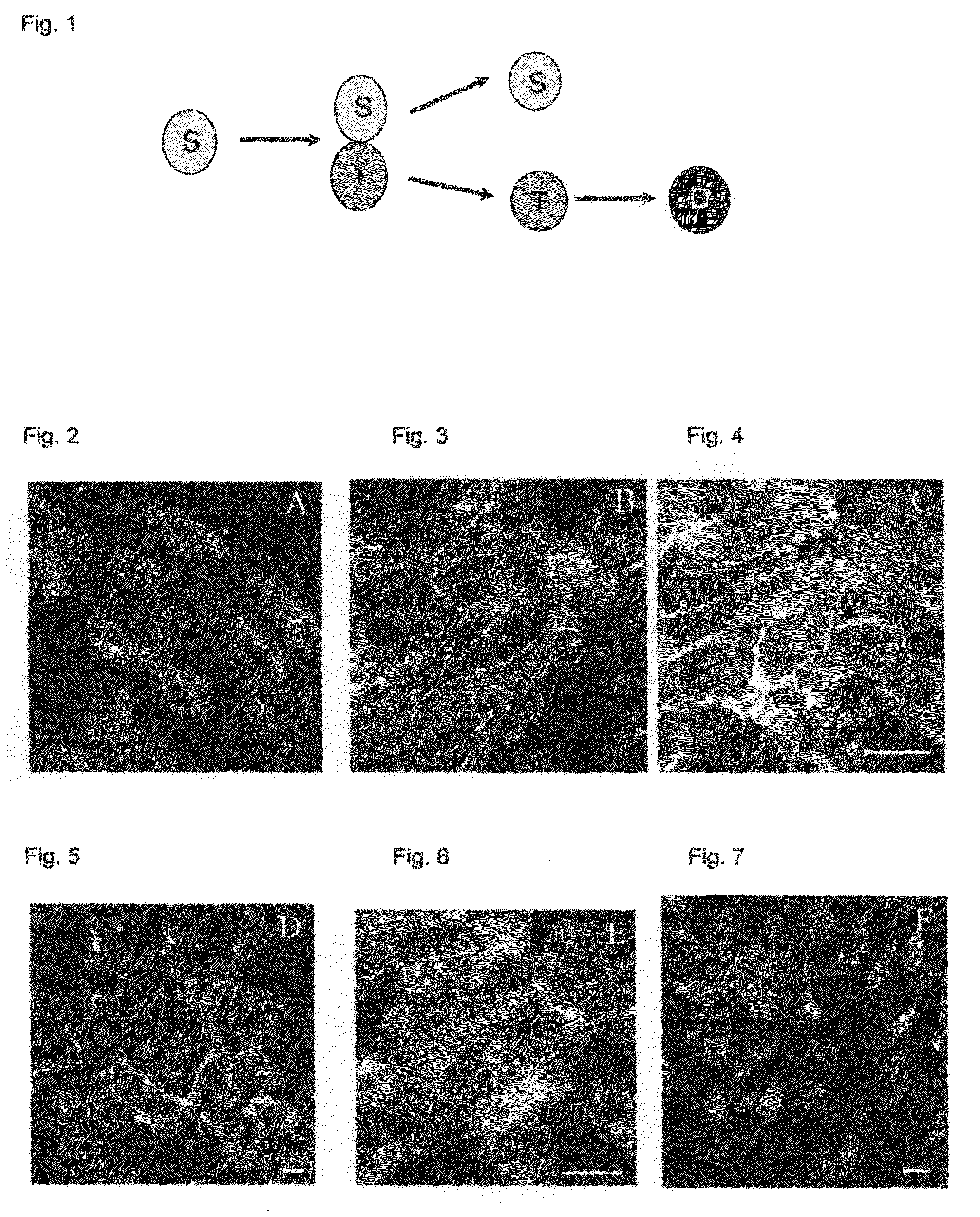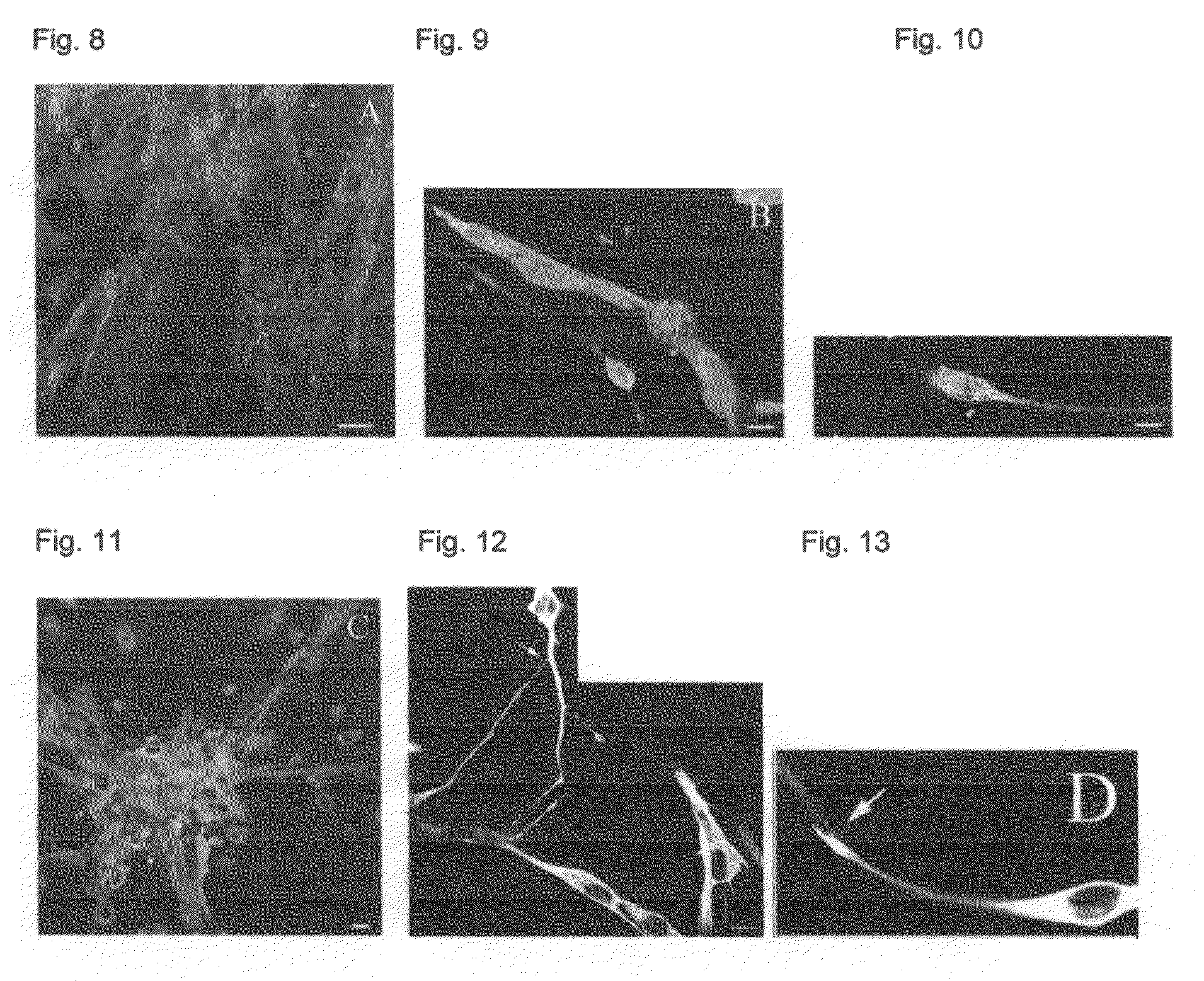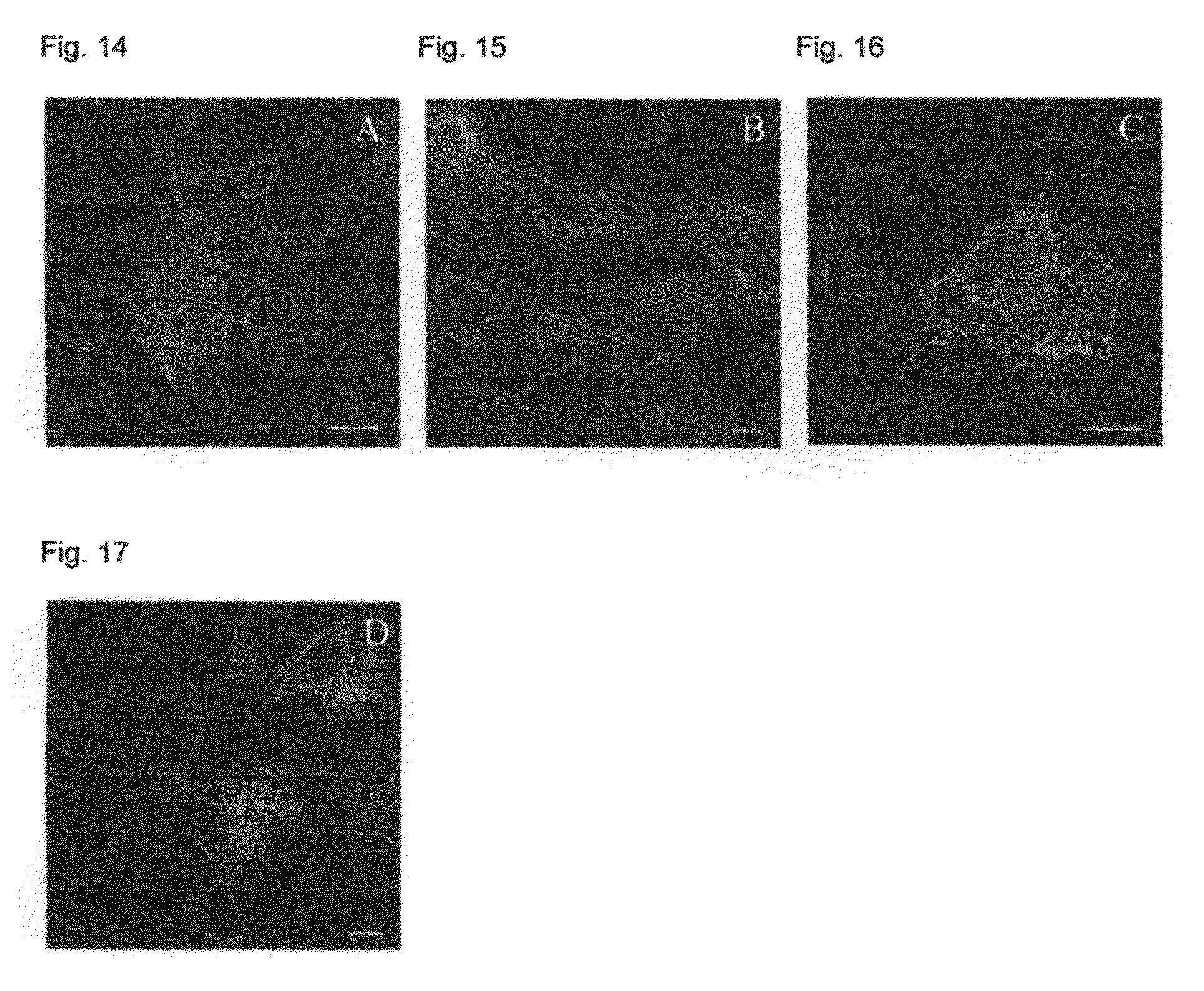Human renal stem cells
a technology of human kidneys and stem cells, applied in the field of human kidney stem cells, can solve the problems of limiting the treatment of these patients, affecting the quality of life of patients, and many to remain on dialysis for extended periods of time,
- Summary
- Abstract
- Description
- Claims
- Application Information
AI Technical Summary
Benefits of technology
Problems solved by technology
Method used
Image
Examples
example 1
A Method for Identifying a Stem Cell Population in Human Renal Papilla with the Capacity to Differentiate into Neuronal- and Epithelial-Like Lineages
Cells and Culture
[0070]We have isolated and characterized cells isolated from renal papilla of three different human kidneys not suited for transplant. Tissue was obtained through the National Disease Research Interchange (NDRI) and the protocol has been judged as exempt by the institutional HRRC. The kidney is bisected and renal papilla are dissected out. The papillary cells are disaggregated using a cocktail of enzymes (including collagenase, hyaluronidase, DNAase I, and soybean trypsin inhibitor) in DME / F12 medium. Digestion is performed at 3% for 60 minutes with vigorous intermittent vortexing. Following digestion, the cells are collected by centrifugation and resuspended in Renal Epithelial Cell Basal Medium (REBM, Clonetics / Biowhittaker, CC-3 191) containing growth factor supplements, cultured for 1-2 passages, and frozen. Individ...
example 2
Methods for Characterization of Adult Renal Stem Cell Populations Cells and Cell Culture
[0080]Human primary epithelial (NK) cells, obtained from previously healthy individuals, are already available in the laboratory. NK renal epithelial cells are derived from the cortex of kidneys not suited for transplant (obtained through the National Disease Research Interchange). Cells are isolated by finely mincing the cortex and releasing cells by enzymatic digestion in a cocktail of collagenase, hyaluronidase, DNase I, soybean trypsin inhibitor and DMEM / F12 media as described in more detail in Example 1 [35, 40, 41]. Human renal papillary cells can be isolated by bisecting the human kidney slightly off-center and scooping out the papilla (5-6 per kidney). The papillary cells can be isolated and cultured. Briefly, the cells are released by enzymatic digestion as described for the cortical epithelial cells and pelleted by centrifugation. The cells are plated in DMEM / F12 media with or without s...
example 3
Co-Culture of Isolated Papillary Renal Stem Cells
[0118]One of the main identifying features of stem cells is their ability to adopt different cell fates or to propogate in an undifferentiated stem cell form. We observed that some of our isolated papillary renal stem cells formed cluster-like structures when placed in media lacking serum and containing 20 ng / ml EGF. The structures resembled those formed by neuronal stem cells called neurospheres. Neurosphere formation is considered a hallmark of undifferentiated neural stem cells.
[0119]Papillary renal stem cells were co-cultured with either differentiated adult human kidney tubule cells or embryonic neural stem cells to evaluate effects of cell secreted factors on renal stem cell plasticity and ability to grow in an undifferentiated state. In this co-culture system, renal stem cells were plated on porous cell culture inserts and co-cultured with neural stem cells, isolated from E-14 mouse embryo. The cells were cultured in defined se...
PUM
| Property | Measurement | Unit |
|---|---|---|
| concentration | aaaaa | aaaaa |
| time | aaaaa | aaaaa |
| time | aaaaa | aaaaa |
Abstract
Description
Claims
Application Information
 Login to View More
Login to View More - R&D
- Intellectual Property
- Life Sciences
- Materials
- Tech Scout
- Unparalleled Data Quality
- Higher Quality Content
- 60% Fewer Hallucinations
Browse by: Latest US Patents, China's latest patents, Technical Efficacy Thesaurus, Application Domain, Technology Topic, Popular Technical Reports.
© 2025 PatSnap. All rights reserved.Legal|Privacy policy|Modern Slavery Act Transparency Statement|Sitemap|About US| Contact US: help@patsnap.com



